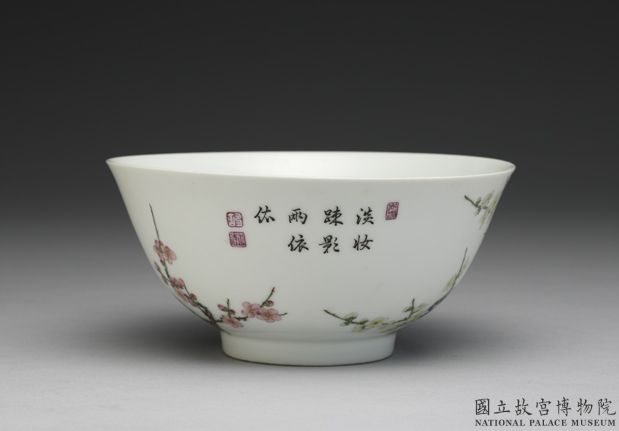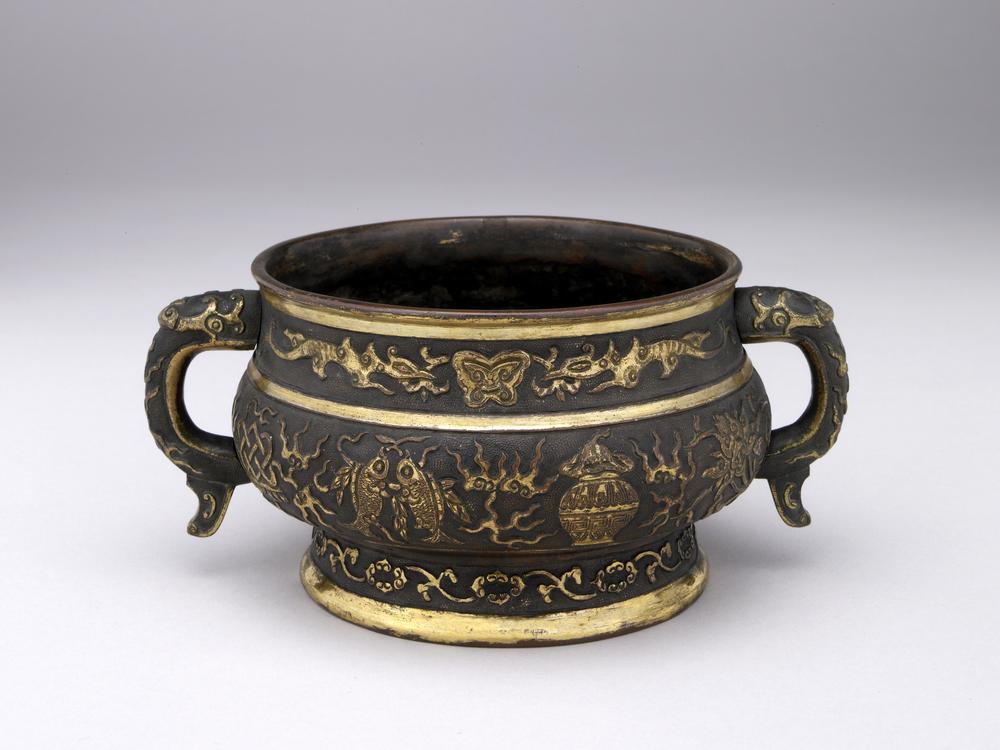Period:Ming dynasty Production date:1488-1505
Materials:porcelain
Technique:incised, glazed, underglazed,
Subjects:dragon
Dimensions:Diameter: 19.80 centimetres Height: 4.70 centimetres
Description:
White porcelain dish with incised and biscuit reserved decoration and a clear glaze ground. This finely potted shallow dish has rounded sides and a tapering foot ring. It is incised with a sinewy dragon among clouds which is reserved in the biscuit. On the convex base, in underglaze blue, is a six-character Hongzhi reign mark in a double ring beneath a blue-tinged glaze.
IMG
![图片[1]-dish BM-1929-0720.1-China Archive](https://chinaarchive.net/Ming dynasty/Ceramics/mid_00269030_001.jpg)
Comments:Harrison-Hall 2001:Large numbers of these dishes were commissioned by the imperial court during the Hongzhi reign. Similar Hongzhi marked dishes are in numerous public collections, including the National Palace Museum, Taipei, and the Hong Kong Museum of Art. Dishes of this type were also made in a smaller diameter, such as an example in the Metropolitan Museum of Art, New York. Their production continued in the ensuing reign of the Zhengde emperor. An example of these later dishes can be found in the Meiyintang Collection. Similar dishes were also made with green enamel over the biscuit areas.
Materials:porcelain
Technique:incised, glazed, underglazed,
Subjects:dragon
Dimensions:Diameter: 19.80 centimetres Height: 4.70 centimetres
Description:
White porcelain dish with incised and biscuit reserved decoration and a clear glaze ground. This finely potted shallow dish has rounded sides and a tapering foot ring. It is incised with a sinewy dragon among clouds which is reserved in the biscuit. On the convex base, in underglaze blue, is a six-character Hongzhi reign mark in a double ring beneath a blue-tinged glaze.
IMG
![图片[1]-dish BM-1929-0720.1-China Archive](https://chinaarchive.net/Ming dynasty/Ceramics/mid_00269030_001.jpg)
Comments:Harrison-Hall 2001:Large numbers of these dishes were commissioned by the imperial court during the Hongzhi reign. Similar Hongzhi marked dishes are in numerous public collections, including the National Palace Museum, Taipei, and the Hong Kong Museum of Art. Dishes of this type were also made in a smaller diameter, such as an example in the Metropolitan Museum of Art, New York. Their production continued in the ensuing reign of the Zhengde emperor. An example of these later dishes can be found in the Meiyintang Collection. Similar dishes were also made with green enamel over the biscuit areas.
© Copyright
The copyright of the article belongs to the author, please keep the original link for reprinting.
THE END





